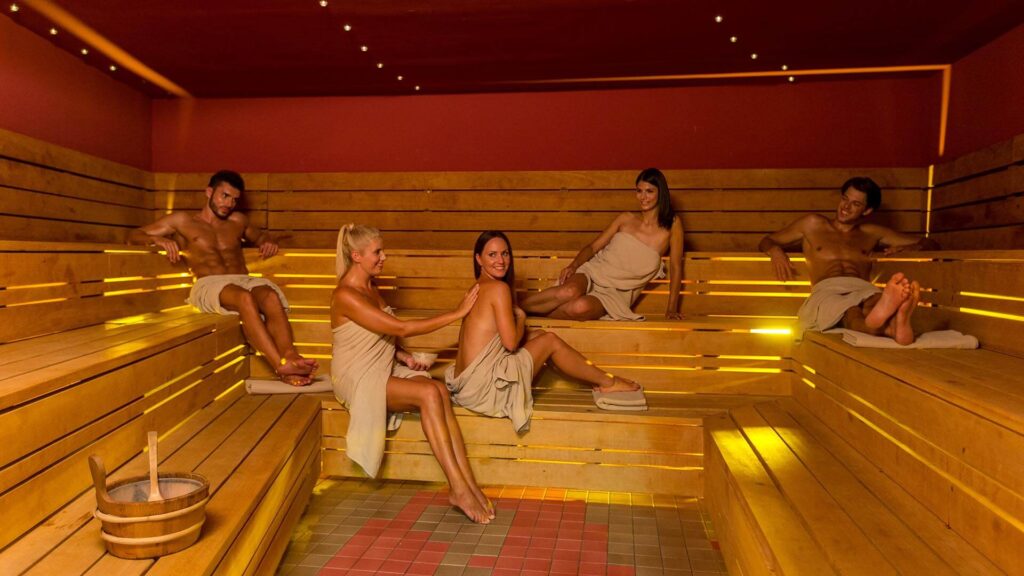In a world where every journey becomes a canvas for luxury, the allure of traveling in style has never been more appealing. Picture this: You’re stepping into a world of elegance, comfort, and prestige, where every detail is finely crafted to redefine the very essence of transportation. From the hallowed halls of chauffeur-driven cars to the boundless skies aboard private jets, luxury transportation beckons.
In this article, we embark on a captivating journey through the wealthy universe of luxury transportation services. We’ll navigate through the streets in chauffeur-driven cars, where commuting becomes an experience. Then, we’ll soar to new heights, where private jets offer the ultimate in exclusive travel, turning every voyage into a tale of extravagance.
But why do people choose luxury transportation? Is it the desire to make a statement, to celebrate life’s milestones, or simply to bask in the lap of luxury? As we delve into this world, we’ll seek answers to these questions and more, uncovering the unique and uncommon facets that make luxury transportation an irresistible choice for discerning travelers.
So, fasten your seatbelts, dear readers, and prepare to explore the world of luxury transportation like never before. Whether you’re drawn to the refined elegance of chauffeur-driven cars or the boundless possibilities of private jets, this article is your ticket to discovering a realm where every journey is an experience to cherish.
Balneotherapy and the Greeks: A Dive into Ancient Spa Culture
Relaxation and wellness have been an integral part of human history for centuries. While we often associate the spa culture with modern-day luxury resorts, it might surprise you that its origins can be traced back to ancient Greece. In this article, we embark on a historical journey to explore “Balneotherapy and the Greeks.” We’ll uncover the fascinating Greek origins of spa culture and how the ancient Greeks incorporated hydrotherapy into their wellness practices.
The Greek Origins of Spa Culture
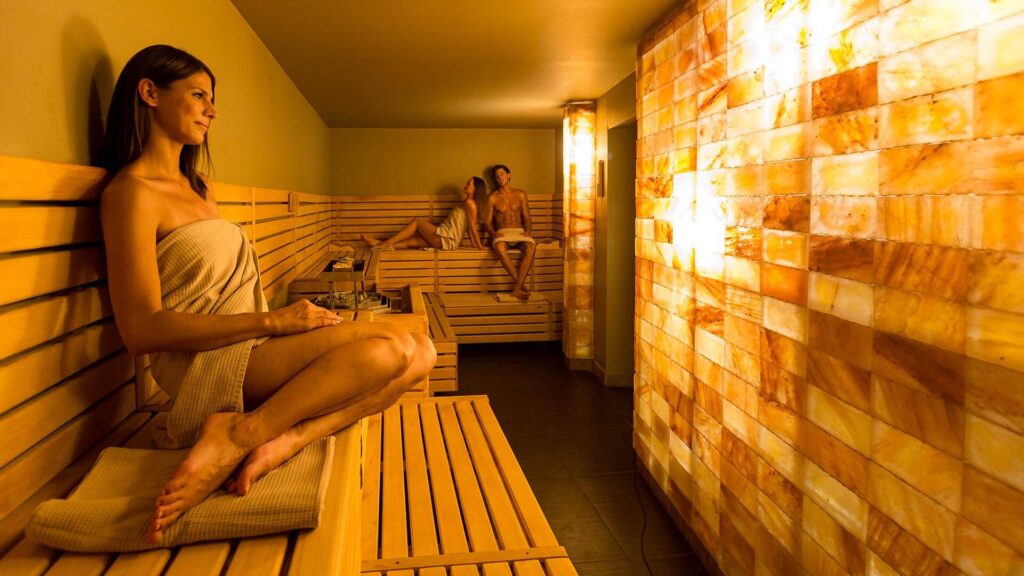
The word “spa” conjures images of serene landscapes, soothing massages, and rejuvenating baths, but the Greeks laid the foundation for this modern oasis of relaxation. The term “spa” itself has its roots in the Latin phrase “Salus per Aquam” or “health through water,” which reflects the essence of ancient Greek balneotherapy.
In ancient Greece, the art of healing and wellness was intertwined with spirituality and philosophy. The Greeks believed in the holistic approach to well-being, focusing on mind, body, and spirit harmony. This belief system paved the way for the development of balneotherapy, a therapeutic practice involving natural mineral waters for healing and rejuvenation.
How the Greeks Incorporated Hydrotherapy
The Temple of Asclepius: A Sanctuary of Healing
One of ancient Greece’s most renowned sanctuaries for healing and wellness was the Temple of Asclepius, the Greek god of medicine. These temples were often situated near natural springs or sources of mineral-rich waters, believed to possess healing properties. Pilgrims would travel great distances to seek solace and treatment in these sacred spaces.
Hydrotherapy: The Healing Power of Water
At the heart of Greek balneotherapy was the belief in the therapeutic power of water. Greeks harnessed the benefits of various water sources, including hot springs, cold baths, and mineral-rich pools. These waters were used not only for physical healing but also for spiritual purification.
Rituals and Ceremonies
Visitors to the Temple of Asclepius would engage in rituals and ceremonies that revolved around hydrotherapy. Purification rituals often started with a cleansing dip in a cold bath and immersion in a warm spring. Submerging oneself in these waters was seen as a symbolic rebirth, a purification of the body and the soul.
Philosophical Foundations
The Greek philosophers, including Plato and Aristotle, recognized the importance of balneotherapy in maintaining overall health. They documented the therapeutic benefits of water and the significance of relaxation for mental and physical well-being. This philosophical understanding further reinforced the practice of hydrotherapy in Greek culture.
Balneotherapy: A Timeless Legacy
The legacy of balneotherapy in ancient Greece continues to influence modern spa culture. The principles of holistic well-being, the healing power of water, and the importance of relaxation have endured through the ages. Today, we find echoes of these ancient practices worldwide in spa treatments, wellness retreats, and hydrotherapy facilities.
As we reflect on the Greek origins of spa culture and the incorporation of hydrotherapy into their wellness practices, we gain a deeper appreciation for the enduring wisdom of the ancients. The healing rituals that once took place in the sacred temples of Greece have evolved into a global industry dedicated to rejuvenation, relaxation, and revitalization.
The ancient Greeks not only laid the foundation for Western philosophy and democracy but also for the modern spa culture we cherish today. Their profound understanding of the healing power of water and the holistic approach to well-being continue to inspire us to seek harmony and balance in our lives, one bath at a time.
Ayurveda and India: Unveiling the Ancient Wellness System
Nestled within the tapestry of India’s rich cultural heritage lies Ayurveda, an ancient holistic healing and wellness system that has withstood the test of time. In this article, we embark on a journey to explore “Ayurveda and India.” We will delve into the profound origins of Ayurveda, revealing the timeless wisdom it carries, and explore how Ayurvedic principles seamlessly integrate into modern spa rituals, creating a harmonious blend of tradition and rejuvenation.
Unveiling the Ancient Indian System of Ayurveda

Ayurveda, often called the “Science of Life,” is an ancient Indian system of medicine that dates back thousands of years. Its roots can be traced to the sacred texts of India, known as the Vedas, where the principles of Ayurveda were first documented.
The Philosophy of Balance
At the core of Ayurveda lies the belief in the importance of balance—balance within oneself and harmony with the natural world. Ayurveda views the human body as an intricate ecosystem where the interplay of physical, mental, and spiritual elements influences health and well-being.
The Doshas: Key to Individuality
Ayurveda categorizes individuals into three primary doshas: Vata, Pitta, and Kapha, each representing a unique combination of elements. Understanding one’s dominant dosha is key to tailoring wellness practices to individual needs.
Healing through Nature
Ayurveda harnesses the healing power of nature through the use of herbs, minerals, and dietary guidelines. The practice emphasizes prevention and treatment, making it a holistic approach to health.
How Ayurvedic Principles Are Integrated into Spa Rituals
Ayurveda in Modern Spa Culture
The principles of Ayurveda have transcended time and geography, finding a prominent place in modern spa culture. Spa-goers around the world now have the opportunity to experience the wisdom of Ayurveda through specialized treatments and rituals.
Dosha-Based Treatments
One of the hallmarks of Ayurvedic spa rituals is the customization of treatments based on an individual’s dosha. A personalized approach ensures that each therapy aligns with the guest’s unique constitution and needs.
Abhyanga: The Art of Ayurvedic Massage
Abhyanga, a traditional Ayurvedic massage, is a cornerstone of spa rituals. Warm herbal oils stimulate the body’s energy flow, promoting relaxation, detoxification, and rejuvenation.
Shirodhara: The Flow of Serenity
Shirodhara is another iconic Ayurvedic treatment where a gentle stream of warm oil is poured onto the forehead. This practice induces deep relaxation, relieves stress, and calms the mind.
Ayurvedic Cuisine
Ayurvedic spa experiences often extend to culinary delights, with spa menus curated to support dosha-specific diets. Guests can savor dishes that not only tantalize their taste buds but also align with their unique constitution.
A Harmonious Blend of Tradition and Rejuvenation
Ayurveda and India have woven together a narrative of well-being that transcends generations. The ancient wisdom of Ayurveda, rooted in balance and nature, finds resonance in the modern world, where the quest for holistic wellness thrives.
As we conclude our journey into “Ayurveda and India,” we are reminded that wellness is not a fleeting trend but a timeless tradition. Ayurveda’s enduring legacy reminds us that true well-being is achieved when we harmonize our inner selves with the world. Through Ayurvedic spa rituals, we embark on a path of rejuvenation, embracing the wisdom of the ages to nurture both body and soul.
Onsen: Japan’s Hot Springs – A Soothing Journey of Mind and Body
Japan, a land of ancient traditions and natural wonders, boasts a cultural gem that has captivated hearts and healed bodies for centuries: onsen or Japanese hot springs. In this article, we embark on a journey to explore the significance of “Onsen: Japan’s Hot Springs.” We’ll delve into the profound cultural and healing aspects of onsen bathing, discovering the tranquil and meditative world it unveils.
Delving into the Significance of Japanese Hot Springs
A Cultural Treasure
Onsen holds a revered place in Japanese culture. These natural thermal baths have been cherished for generations, not only for their healing properties but also for their spiritual and communal significance.
Healing Waters
The mineral-rich waters of onsen are renowned for their therapeutic benefits. The minerals, such as sulfur and calcium, are believed to alleviate various ailments, including rheumatism and skin conditions. Bathing in onsen is viewed as a holistic approach to health.
The Onsen Experience
Visiting an onsen is not merely about taking a dip; it’s a ritual. It involves a specific sequence of cleansing, soaking, and relaxation. Respect for tradition is a vital part of the experience.
The Meditative and Healing Aspects of Onsen Bathing
Communion with Nature
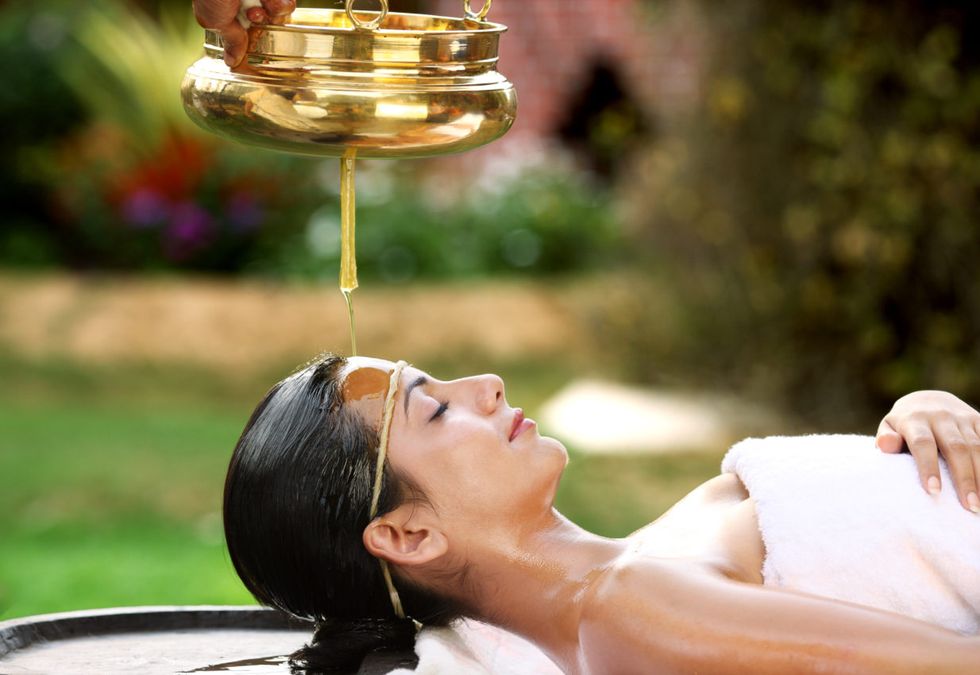
Onsen is often nestled in picturesque natural settings – surrounded by mountains, forests, or near the ocean. The serene surroundings create an atmosphere of tranquility, allowing bathers to connect with nature as they soak.
Mindful Moments
Onsen bathing is an exercise in mindfulness. You’re encouraged to release stress and worries as you submerge yourself in the warm waters. The soothing embrace of the onsen promotes a sense of calm and mental clarity.
Shared Experiences
Many onsen facilities provide communal baths, where strangers gather to soak in the healing waters. This communal aspect fosters a sense of togetherness and relaxation, transcending barriers and fostering connections.
Ryokans: The Ultimate Onsen Retreats
Staying at a traditional Japanese inn known as a ryokan adds another layer to the onsen experience. Ryokans often feature private baths, allowing guests to enjoy the healing waters in the comfort of their rooms.
Seasonal Delights
Onsen experiences change with the seasons. Whether it’s cherry blossoms in spring, vibrant foliage in autumn, or snow-covered landscapes in winter, each season offers a unique and captivating backdrop to your onsen adventure.
Bathing transcends the physical realm in the onsen world, becoming a sacred passage of healing and rejuvenation. It’s a cultural treasure cherished for centuries and continues to captivate visitors worldwide.
As you immerse yourself in Japanese hot springs’ meditative and healing embrace, you embark on self-discovery and renewal. The onsen experience is not just about physical wellness; it’s a holistic celebration of the mind, body, and soul – a soothing journey that promises to leave you revitalized and deeply connected to the heart of Japan’s timeless traditions.
Sento: Public Bathhouses – A Communal Oasis of Japanese Culture
In the heart of Japan’s cultural landscape lies an enchanting tradition that has been nurturing bodies and spirits for centuries: sento or public bathhouses. In this article, we embark on a journey to explore the world of “Sento: Public Bathhouses.” We’ll delve into the unique communal experience that sento offers and unravel its profound cultural importance in Japanese society.
Exploring the Communal Experience of Sento
A Gathering Place
Sento is more than a place to cleanse one’s body; it’s a hub of social interaction and community bonding. Locals and visitors gather at Sento to engage in conversation, share stories, and strengthen the bonds of friendship.
The Art of Soaking
Sento bathhouses are equipped with various baths, each offering a unique experience. These options cater to diverse preferences and therapeutic needs, from hot baths to cold plunge pools.
The Ritual of Cleansing
Before entering the baths, visitors must follow a specific cleansing ritual. This process involves thoroughly washing and rinsing one’s body at individual washing stations. This ritual signifies physical purification and a transition from the outer world to the serene oasis of the bathhouse.
The Cultural Importance of Sento in Japanese Society
Historical Significance
Sento has a storied history dates back to the 6th century, making it an enduring tradition deeply rooted in Japanese culture. Over the centuries, sento bathhouses have evolved from simple wooden structures to modern facilities, each preserving the essence of communal bathing.
A Respite from the Mundane
In a fast-paced world, sento offers a sanctuary of tranquility. Soaking in the warm waters allows individuals to unwind, relax, and momentarily escape the pressures of daily life.
A Symbol of Community
Sento bathhouses are not just businesses; they are community institutions. They play a pivotal role in fostering a sense of belonging and unity within neighborhoods. Many sentos are family-run businesses passed down through generations, serving as pillars of local culture.
Artistic Expressions
Sentos often feature beautiful tile murals and decorations, some of which have historical or cultural significance. These artistic elements enhance the overall ambiance of the bathhouse, elevating it from a functional space to a place of aesthetic appreciation.
Sento in Modern Times
While the number of sento bathhouses has declined over the years due to the prevalence of private bathrooms in homes, they hold cultural significance. Some sectors have adopted themed baths, events, and unique experiences to attract new visitors.
Sento bathhouses are more than just places to wash; they are living repositories of Japanese culture and tradition. The communal experience of sento, with its rich history and cultural significance, offers a unique glimpse into the heart of Japanese society.
As you step into the serene world of a sento, you cleanse your body and immerse yourself in a tradition that has endured for centuries. It’s a communal oasis where community bonds are strengthened, the spirit is rejuvenated, and the essence of Japanese culture is lovingly preserved. Sento is a living testament to Japanese customs’ enduring beauty and communal relaxation’s timeless appeal.
The Art of Hammam: Unveiling the Middle Eastern Bathhouse
In the heart of the Middle East, a centuries-old tradition has stood as a testament to the region’s rich cultural heritage: the hammam. In this article, we embark on a journey to explore “The Art of Hammam.” We’ll reveal the enchanting world of the traditional Middle Eastern bathhouse and uncover the profound ritualistic elements that make hammam bathing a unique and timeless experience.
Revealing the Traditional Middle Eastern Bathhouse – The Hammam
A Glimpse into History
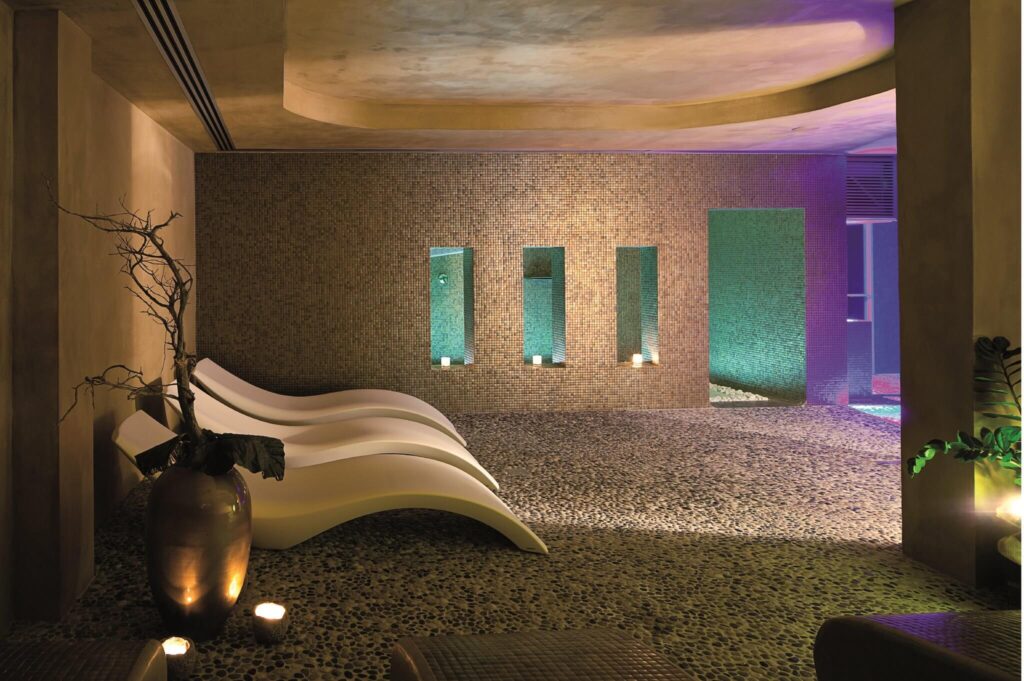
The hammam, with its roots tracing back to ancient Greece and Rome, found its true home in the Middle East. Over the centuries, it has evolved into a cultural institution deeply embedded in the region’s social fabric.
Architectural Elegance
Hammams are architectural marvels that blend form and function seamlessly. These bathhouses often feature stunning mosaics, intricate tile work, and domed ceilings, creating an atmosphere of luxury and serenity.
Gender Segregation
Traditional hammams are often segregated by gender, with separate areas for men and women. This division allows for a sense of privacy and comfort, preserving the cultural modesty of the region.
The Ritualistic Elements of Hammam Bathing
The Warming Room
The journey through the hammam typically begins in a warm, humid chamber. Here, visitors relax and prepare their bodies for cleansing, allowing their pores to open and muscles to unwind.
Steam and Scrub
The heart of the hammam experience lies in the steam and scrub. Steam rooms, often infused with aromatic scents like eucalyptus or rose, envelop visitors, preparing their skin for exfoliation. A traditional case scrubbing mitt removes dead skin cells, leaving the skin soft and rejuvenated.
Cleansing with Soap
Hammam soap, known as “saboun beldi” or black soap, is an essential ritual element. Made from olives and infused with eucalyptus, this soap cleans the body. The skin is left feeling refreshed and invigorated.
The Immersion Pool
After cleansing, visitors dip into a refreshing immersion pool to rinse away impurities and further relax their bodies. The contrast between the warmth of the hammam and the coolness of the pool is refreshing.
Post-Bath Relaxation
The hammam experience culminates in a relaxation area where visitors can unwind, sip herbal tea, and revel in the sense of renewal that comes with the ritual. It’s a time for reflection, conversation, and rejuvenation.
A Timeless Art of Purification
The hammam is more than a bathhouse; it’s a living art form that celebrates the harmonious interplay of culture, architecture, and wellness. It’s a testament to the Middle East’s deep-rooted traditions and the enduring allure of ceremonial purification.
You are not merely cleansing your body but immersing yourself in a cultural journey transcending time. It’s a timeless art that unites the past and present, offering a unique blend of relaxation, rejuvenation, and cultural immersion. The hammam is a sanctuary where the body is purified, the spirit is refreshed, and the artistry of Middle Eastern culture is lovingly preserved.
Ghassoul and Black Soap: The Hammam’s Natural Wonders
Deep within the ancient rituals of the Middle Eastern hammam, two extraordinary spa products take center stage: ghassoul clay and black soap. In this article, we embark on a journey to explore “Ghassoul and Black Soap.” We’ll delve into these unique spa treasures and uncover their pivotal roles in rejuvenating the skin, leaving it soft, supple, and radiant.
Discovering Ghassoul Clay
The Moroccan Treasure
Ghassoul clay, also known as ghassoul clay, is a natural mineral-rich clay harvested primarily from the Atlas Mountains of Morocco. It’s a centuries-old beauty secret that has been passed down through generations.
The Magic of Absorption
What sets ghassoul clay apart is its ability to absorb impurities and excess oil from the skin and hair. Its microscopic structure acts like a magnet, drawing out toxins and leaving the skin cleansed and refreshed.
A Multifaceted Marvel
Ghassoul clay is incredibly versatile. In the hammam, it’s used as a cleansing and exfoliating mask. When mixed with water, it transforms into a silky paste applied to the body and face, providing a gentle yet deep cleanse.
Unveiling the Mystique of Black Soap
An Ancient Tradition
Black soap, or “saboun beldi,” is a traditional soap from Morocco. It’s a natural blend of olive oil, black olives, and eucalyptus leaves, creating a dark, dense soap with a distinctive earthy aroma.
The Art of Exfoliation
Black soap plays a vital role in the hammam’s exfoliation process. Applied liberally to the skin after a steam or warm water soak, it acts as a catalyst, softening the skin and making it receptive to scrubbing.
The Kese Scrubbing Experience
The combination of black soap and a Kese scrubbing mitt is a cornerstone of the hammam ritual. The soap’s texture allows the mitt to remove dead skin cells effectively, leaving the skin remarkably smooth and glowing.
Their Role in Rejuvenating the Skin
A Cleansing Symphony
Together, ghassoul clay and black soap form a cleansing symphony in the hammam. Ghassoul clay gently detoxifies the skin, while black soap preps it for exfoliation, allowing for a deeper and more thorough scrub.
Skin Nourishment
While these products excel in cleansing, they also nourish the skin. Ghassoul clay is rich in minerals that benefit the skin’s health, while black soap’s olive oil base moisturizes and hydrates, leaving the skin soft and supple.
Radiant Results
The combination of these two products produces radiant results. Skin emerges from the hammam experience, cleansed, rejuvenated, and beautifully refreshed. It’s a transformative journey that leaves a lasting impression.
In the world of spa rituals, ghassoul clay and black soap stand as unique treasures, drawing upon Morocco’s rich natural resources and hammam traditions. Their roles in rejuvenating the skin are a testament to the power of nature and the wisdom of ancient cultures.
As you immerse yourself in the rejuvenating embrace of ghassoul clay and black soap in the hammam, you’re not just treating your skin but connecting with centuries of tradition and natural wonders. It’s a testament to the timeless allure of spa rituals, where the past and the present merge, and the skin is reborn with a newfound radiance and vitality. Ghassoul and black soap are nature’s gifts to the hammam; we rediscover the beauty of ancient wellness through them.
Scandinavian Saunas: A Journey into Wellness
In the frosty embrace of Scandinavia, saunas reign supreme, offering warmth, relaxation, and a profound connection to tradition. In this article, we embark on a journey into the world of “Scandinavian Saunas.” We’ll delve into the rich sauna culture of Finland and uncover the physical and mental health benefits of sauna sessions. Additionally, we’ll explore the invigorating practice of ice bath plunges and how they complement the sauna experience.
Sauna Culture in Finland
The Heart of Sauna Tradition
Finland, often called the “Land of Saunas,” boasts an intimate relationship with these heated retreats. Saunas have been central to Finnish life for centuries, serving as spaces for relaxation, purification, and social gatherings.
A Ritual of Purification
In Finland, the sauna is more than a heated room; it’s a sanctuary for both body and soul. Sweating in the sauna is seen as a form of purification, cleansing the skin and spirit.
Health Benefits of Sauna
Research suggests that regular sauna use provides an array of health benefits. It can improve cardiovascular health, reduce stress, and even promote better sleep. Sauna sessions leave participants feeling rejuvenated and invigorated.
Ice Bath Plunges: A Frigid Revelation
The Contrast of Ice Baths
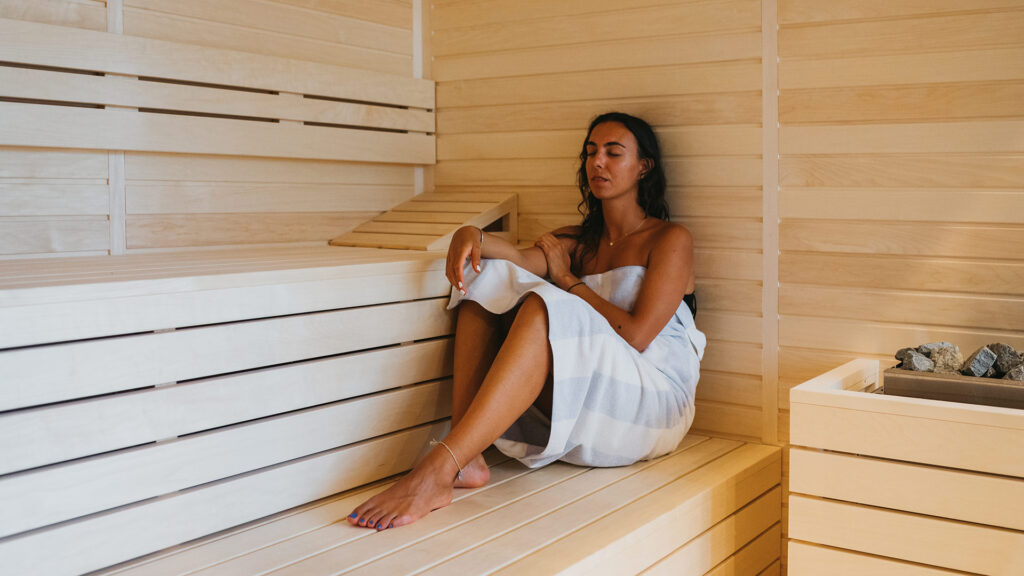
To complement the intense heat of saunas, Scandinavians have embraced the practice of ice bath plunges. This involves submerging oneself in icy water, contrasting the sauna’s warmth.
Invigorating the Body
Ice bath plunges stimulate circulation, tighten the skin, and invigorate the body. The rapid cooling effect can boost alertness and provide a rush of endorphins, creating a feeling of euphoria.
A Ritual of Balance
In Scandinavian saunas, the sequence of sauna sessions followed by ice bath plunges is a ritual of balance. It promotes physical and mental resilience by challenging the body’s adaptability.
The Sauna-Ice Bath Cycle
Participants typically alternate between sauna sessions and ice bath plunges, creating a cycle that can be repeated multiple times. Each plus return to the comforting warmth of the sauna follows each plunge into the icy water segmentary Wellness.
The Yin and Yang of Sauna and Ice Baths
Combining sauna and ice bath plunges creates a harmonious yin and yang of wellness. The sauna’s heat opens pores, relaxes muscles, and promotes detoxification, while the icy plunge awakens the senses and invigorates the body.
Mental Resilience
The contrast between extreme temperatures cultivates mental resilience. It challenges the mind to adapt to discomfort, promoting a sense of calm and mental fortitude.
In the heart of Scandinavia, saunas and ice bath plunges harmonize to create a wellness symphony like no other. The sauna culture of Finland reflects a deep-rooted tradition that nourishes both body and soul, while the invigorating practice of ice bath plunges complements it perfectly.
As you step into the world of Scandinavian saunas, you’re not merely embracing warmth and cold; you’re immersing yourself in a centuries-old tradition of wellness and resilience. It’s a journey that leaves you feeling rejuvenated, invigorated, and deeply connected to the heart of Scandinavia’s wellness heritage. Scandinavian saunas and ice bath plunges celebrate contrast and harmony, where the body thrives and the soul finds solace.
Luxury Spa Rituals and Traditions: A Global Tapestry of Wellness
Luxury spa rituals and traditions worldwide offer a rich tapestry of wellness experiences span cultures, continents, and centuries. In this article, we embark on a journey to explore these diverse and captivating spa practices. We’ll delve into the deep-rooted sauna culture of Finland, uncover the invigorating practice of ice bath plunges, shed light on Native American sweat lodge ceremonies, discover the holistic approach to wellness in Aboriginal Australian bush spas, discuss the fusion of global spa traditions in luxury spa resorts, and examine the rise of wellness tourism. This tapestry of wellness traditions invites us to explore and embrace the world’s diverse spa experiences.
Sauna Culture in Finland
A Cultural Sanctuary
Finland, known as the “Land of Saunas,” boasts a deep-rooted sauna culture that dates back centuries. Saunas in Finland are not just a means of relaxation; they are a way of life, a cultural sanctuary where physical and mental well-being are nurtured.
The Health Benefits
Sauna sessions in Finland offer numerous health benefits, including improved cardiovascular health, reduced stress, and enhanced sleep quality. The ritual of cleansing in the sauna leaves participants feeling rejuvenated and invigorated.
Ice Bath Plunges
Embracing Extremes
Complementing the intense heat of saunas, Scandinavians have embraced the invigorating practice of ice bath plunges. This contrast of extreme temperatures stimulates circulation, tightens the skin, and invigorates the body, leaving participants euphoric.
A Ritual of Balance
In Scandinavian saunas, the sequence of sauna sessions followed by ice bath plunges is a ritual of balance. It challenges the body’s adaptability, promoting physical and mental resilience.
Indigenous Healing Practices
Native American Sweat Lodges
Native American sweat lodge ceremonies hold deep spiritual and therapeutic significance. These rituals involve sweat lodges, where participants gather to purify the body and soul. The intense heat and steam create a profound sense of release and renewal.
Aboriginal Australian Bush Spas
Aboriginal Australian bush spas offer a holistic approach to wellness that integrates nature, culture, and healing. These wellness practices occur in the Australian wilderness’s heart, connecting participants with the land and their cultural heritage.
Modern Fusion and Innovations
Global Spa Resorts
Luxury spa resorts worldwide have embraced the concept of fusion, blending diverse spa traditions under one roof. Guests can experience wellness practices from various cultures, creating a global spa experience that transcends borders.
The Rise of Wellness Tourism
Wellness tourism has emerged as a significant trend, allowing travelers to seek authentic cultural experiences through wellness retreats. Travelers seek destinations promoting physical, mental, and spiritual well-being.
The rich tapestry of luxury spa rituals and traditions worldwide invites us to embrace diverse spa experiences. Whether you’re immersing yourself in the sauna culture of Finland, taking the plunge into ice bath therapy, participating in Native American sweat lodge ceremonies, exploring Aboriginal Australian bush spas, enjoying the fusion of global spa traditions in luxury resorts, or embarking on a wellness tourism journey, the world of wellness offers something for everyone. It’s an invitation to explore, rejuvenate, and discover the healing and rejuvenating practices that enrich cultures and nourish the soul.
As we draw the curtains on our exploration of “Luxury transportation services: From chauffeur-driven cars to private jets,” it’s evident that the world of wealthy travel offers a tapestry of choices to cater to the discerning traveler. From the seamless elegance of chauffeur-driven cars to the airborne extravagance of private jets, these modes of transport represent more than just convenience; they epitomize the art of luxury and sophistication.
In this ever-evolving landscape, where time is precious, and comfort is paramount, these services rise to the occasion, setting the stage for remarkable journeys. Whether you seek the intimacy of a chauffeured car winding through city streets or the boundless horizons of private jet travel, these experiences are a testament to human ingenuity and the pursuit of excellence.
While we’ve touched on the luxury and practicality of these services, let’s remember the essence of luxury – the freedom to curate your journey and savor every moment. It’s about relishing being in control, embracing the pleasures of personalized service, and leaving behind the mundane for a while.
As you step into the world of luxury transportation, whether for a business engagement, a special occasion, or simply the desire to elevate your travel experience, remember that the journey itself is a destination worth savoring. Luxury transportation is not just about reaching your endpoint; it’s about the remarkable voyage you embark on, the memories you create, and the stories you share.
So, as you embark on your next journey in style, whether by chauffeur-driven car or private jet, do so with a sense of wonder and appreciation for the world of possibilities that luxury travel affords. After all, the true essence of luxury lies not only in the extravagance of the experience but also in the joy of the journey itself. Safe travels, and may your adventures always be as luxurious as your destination.

